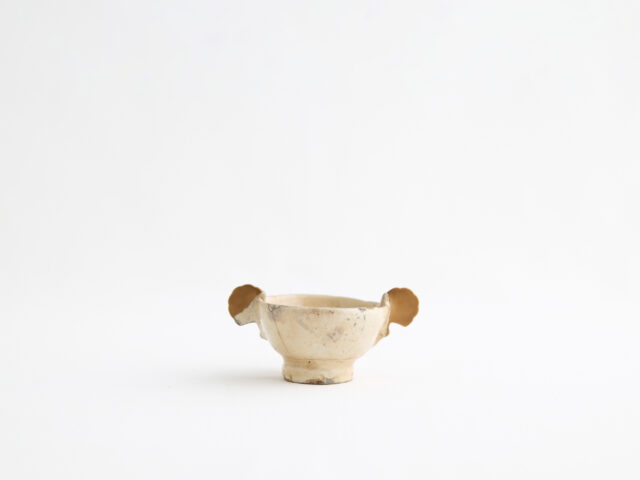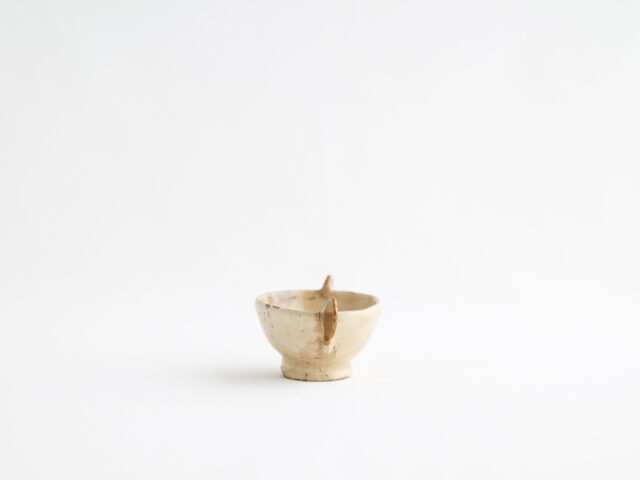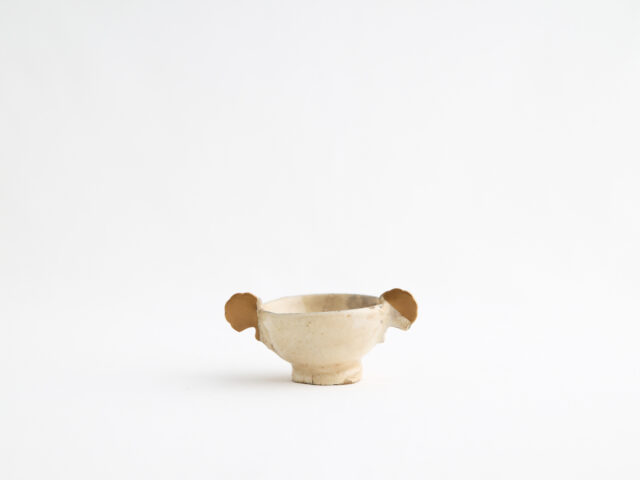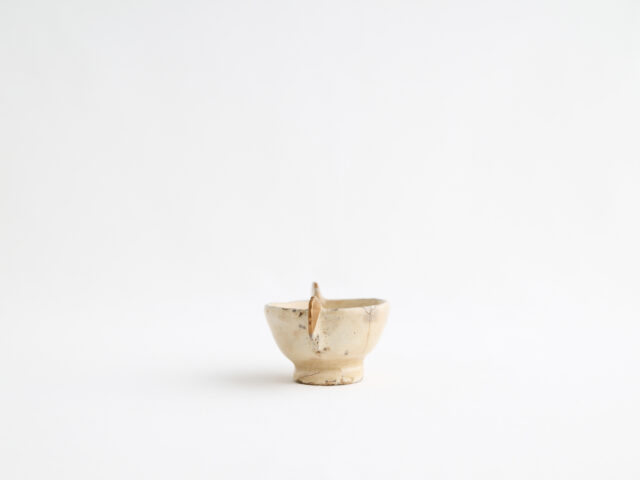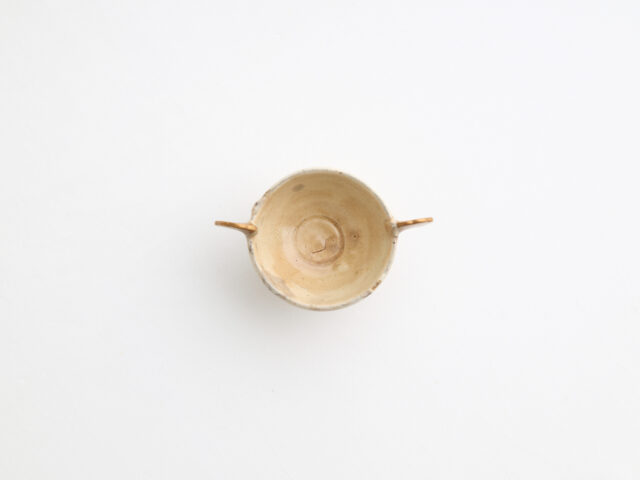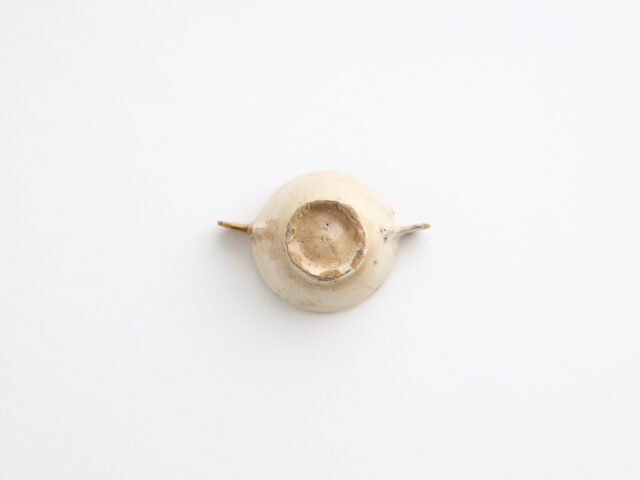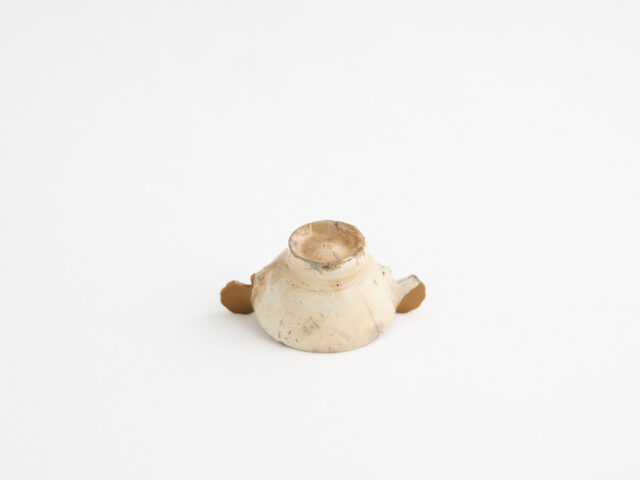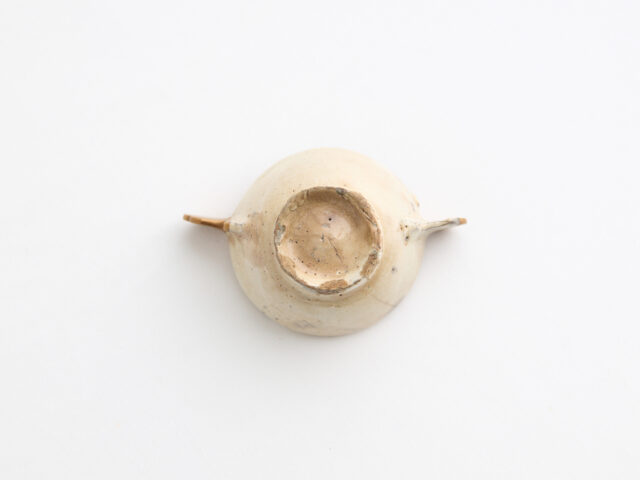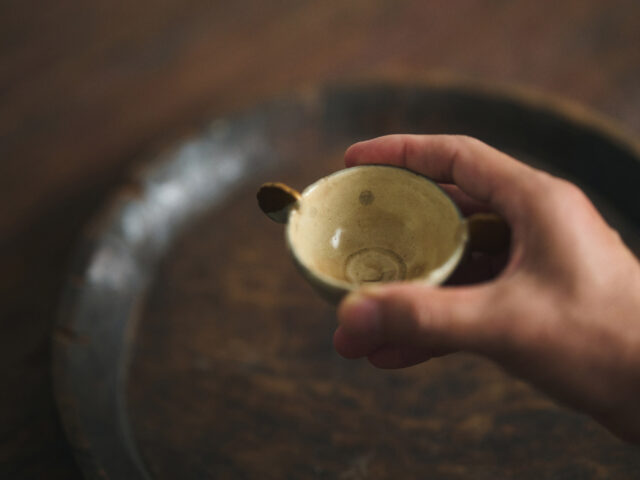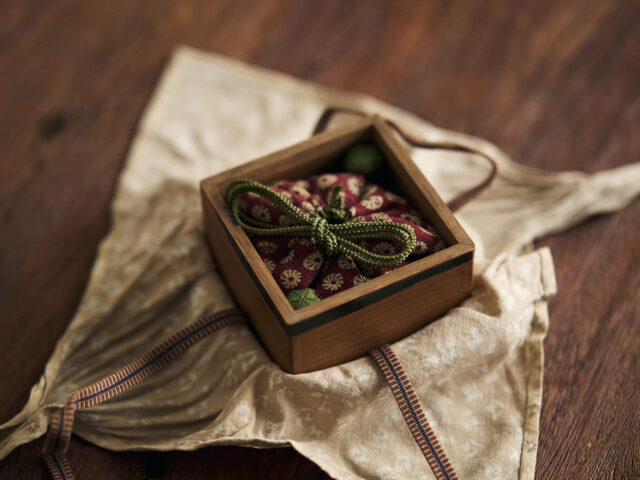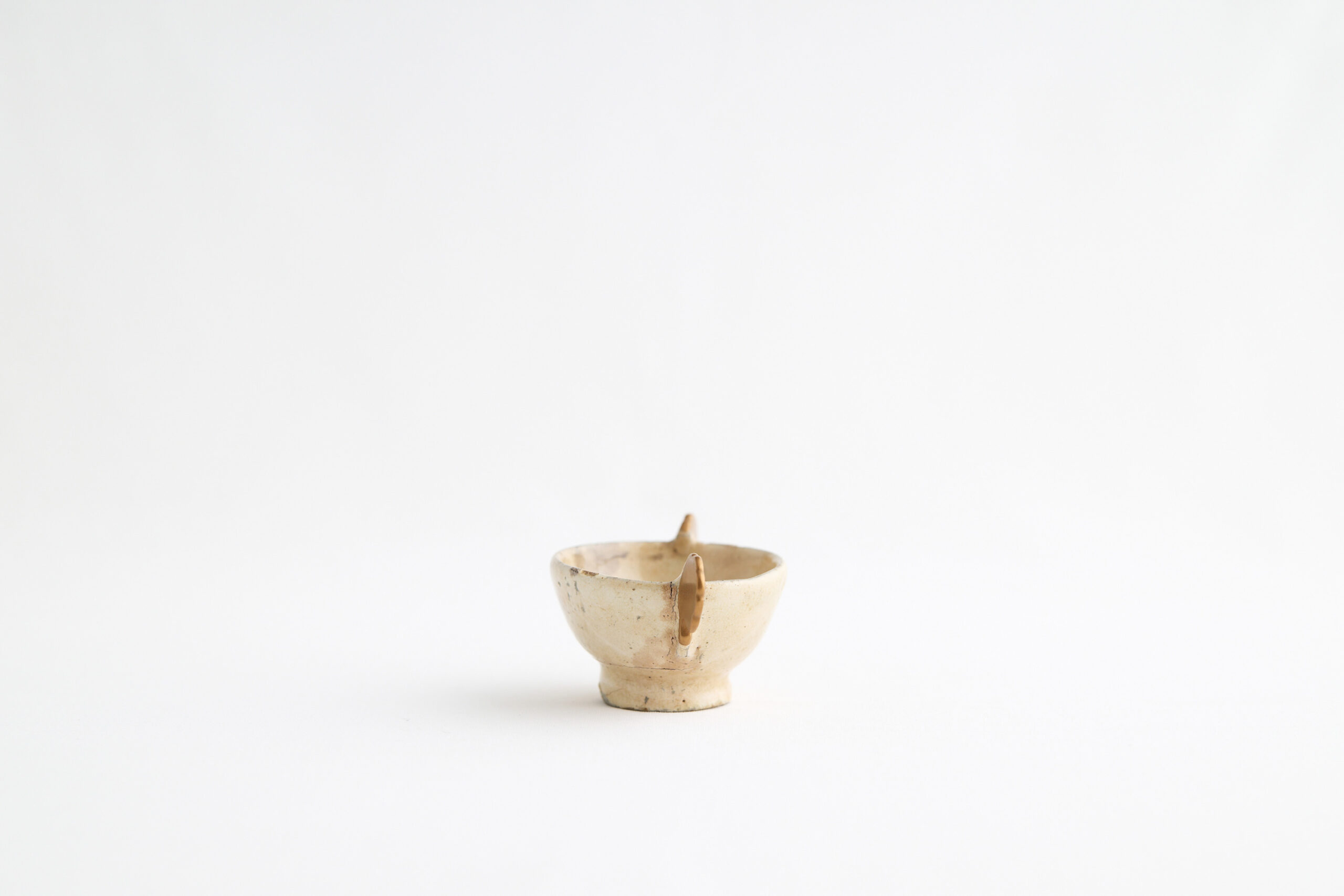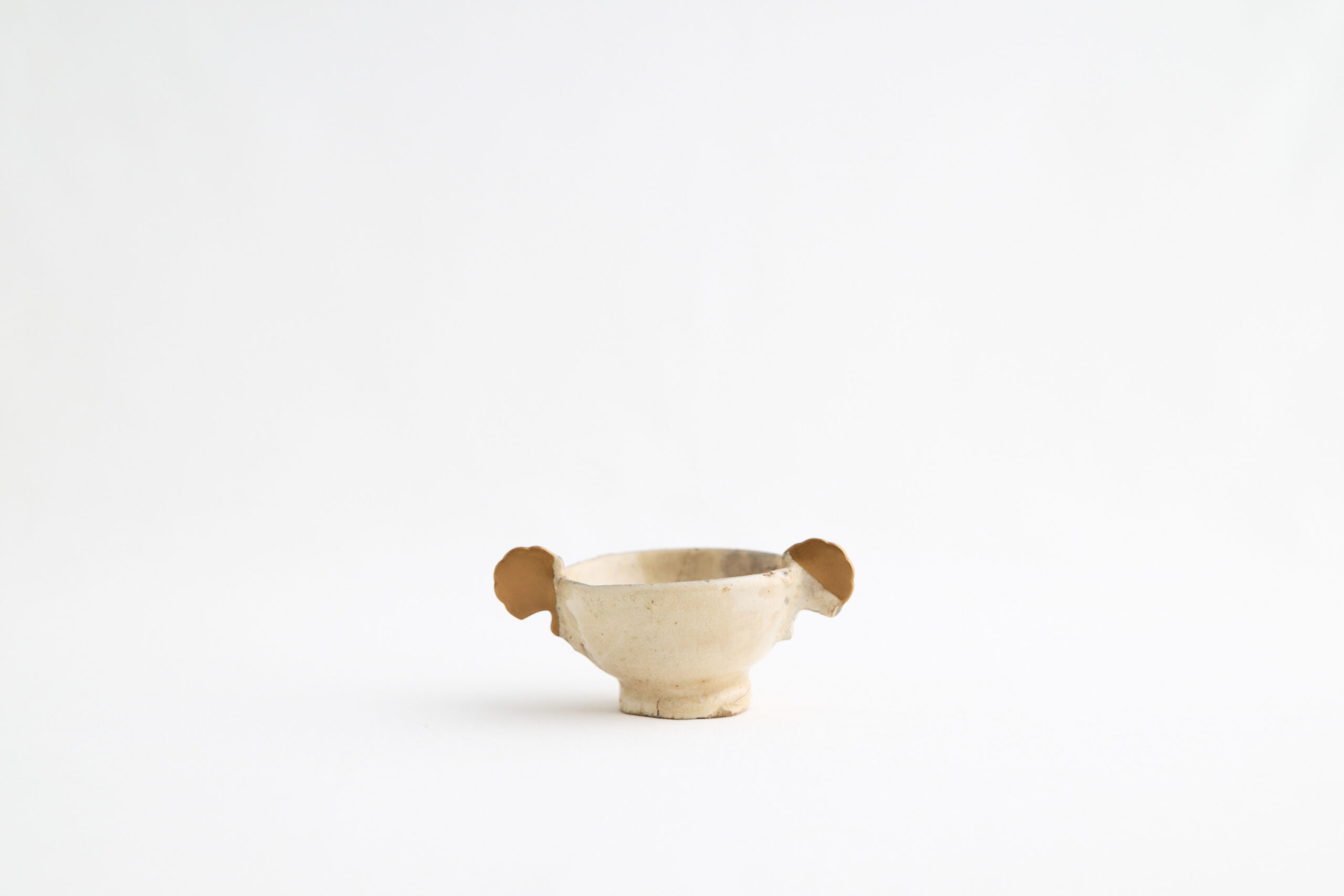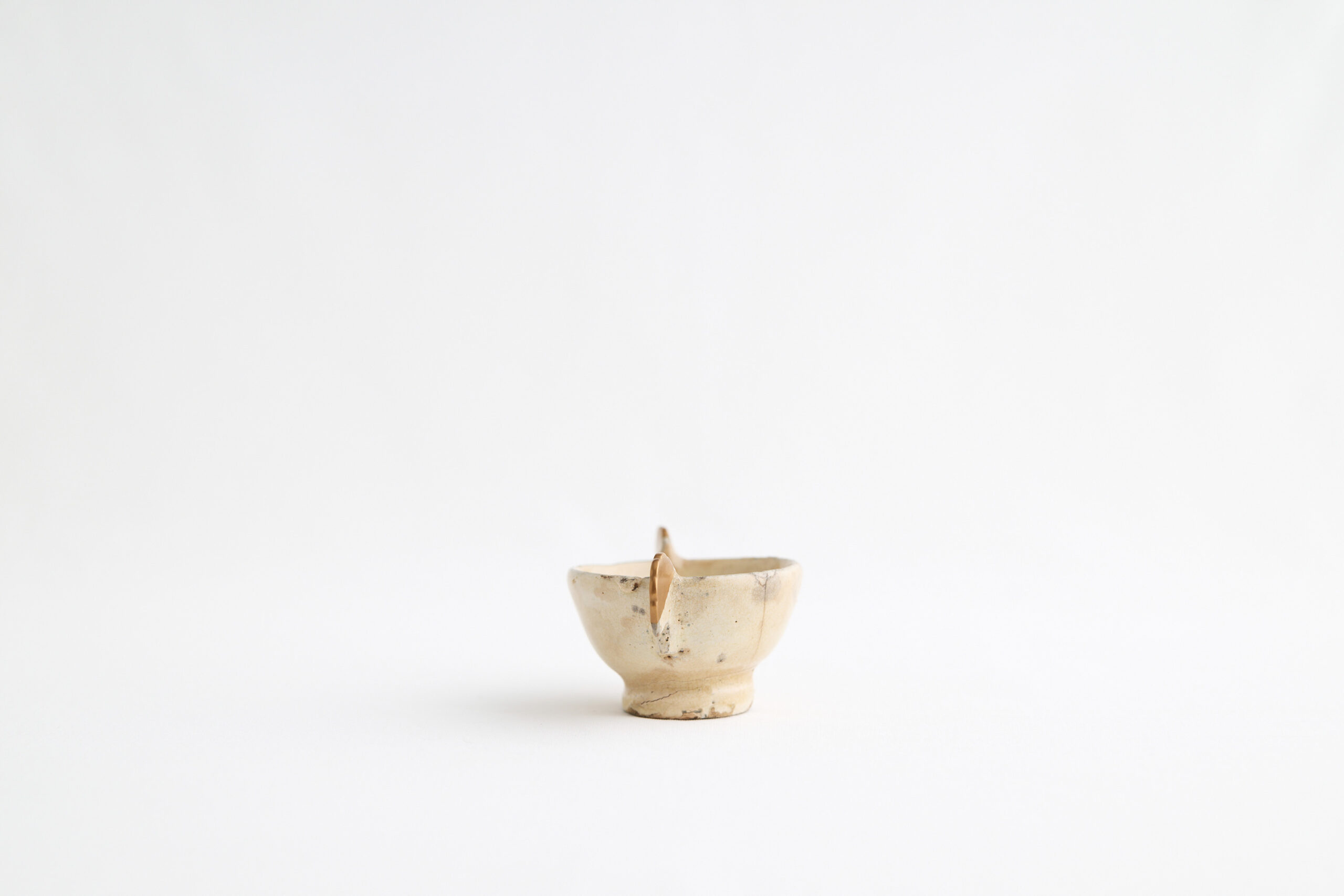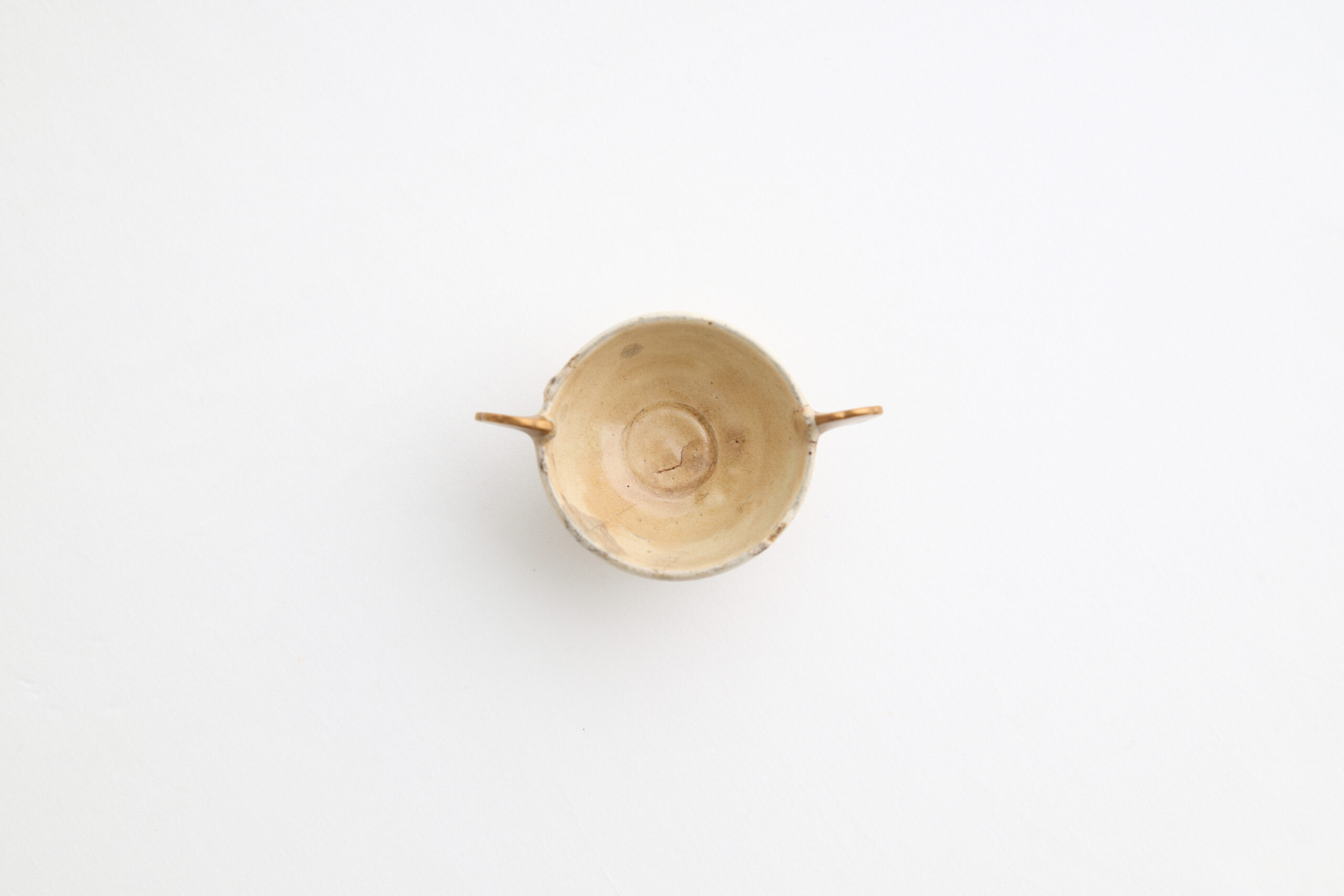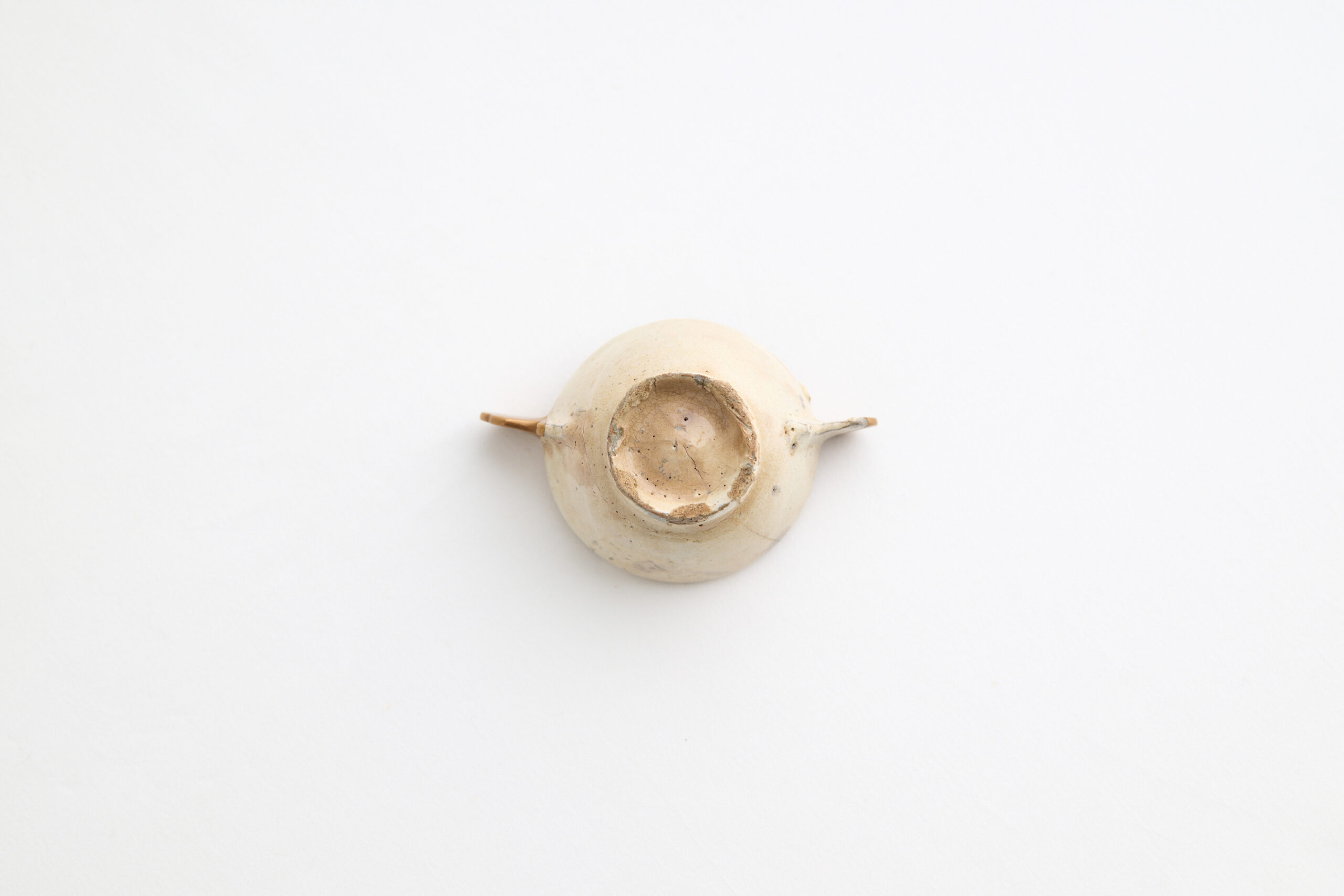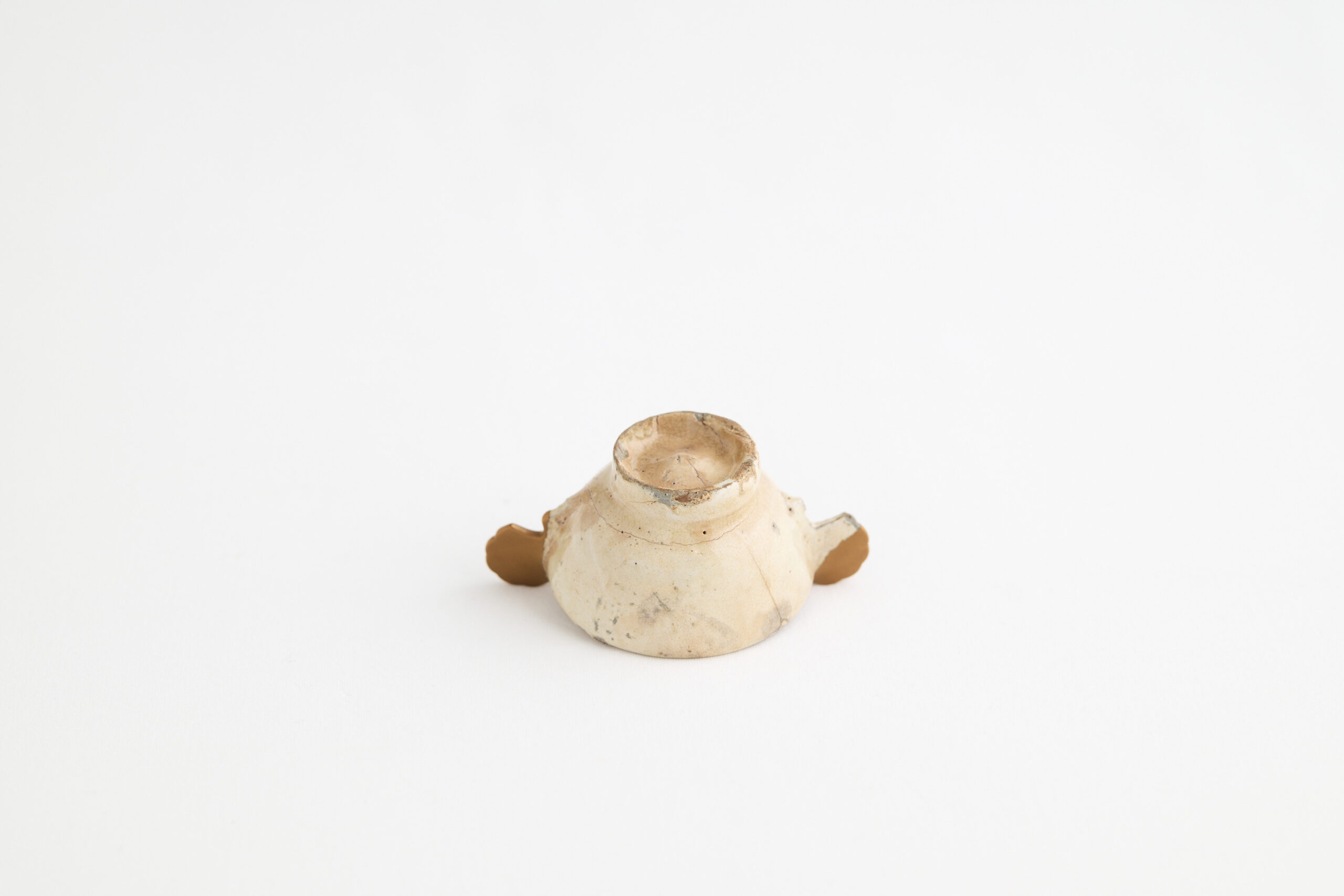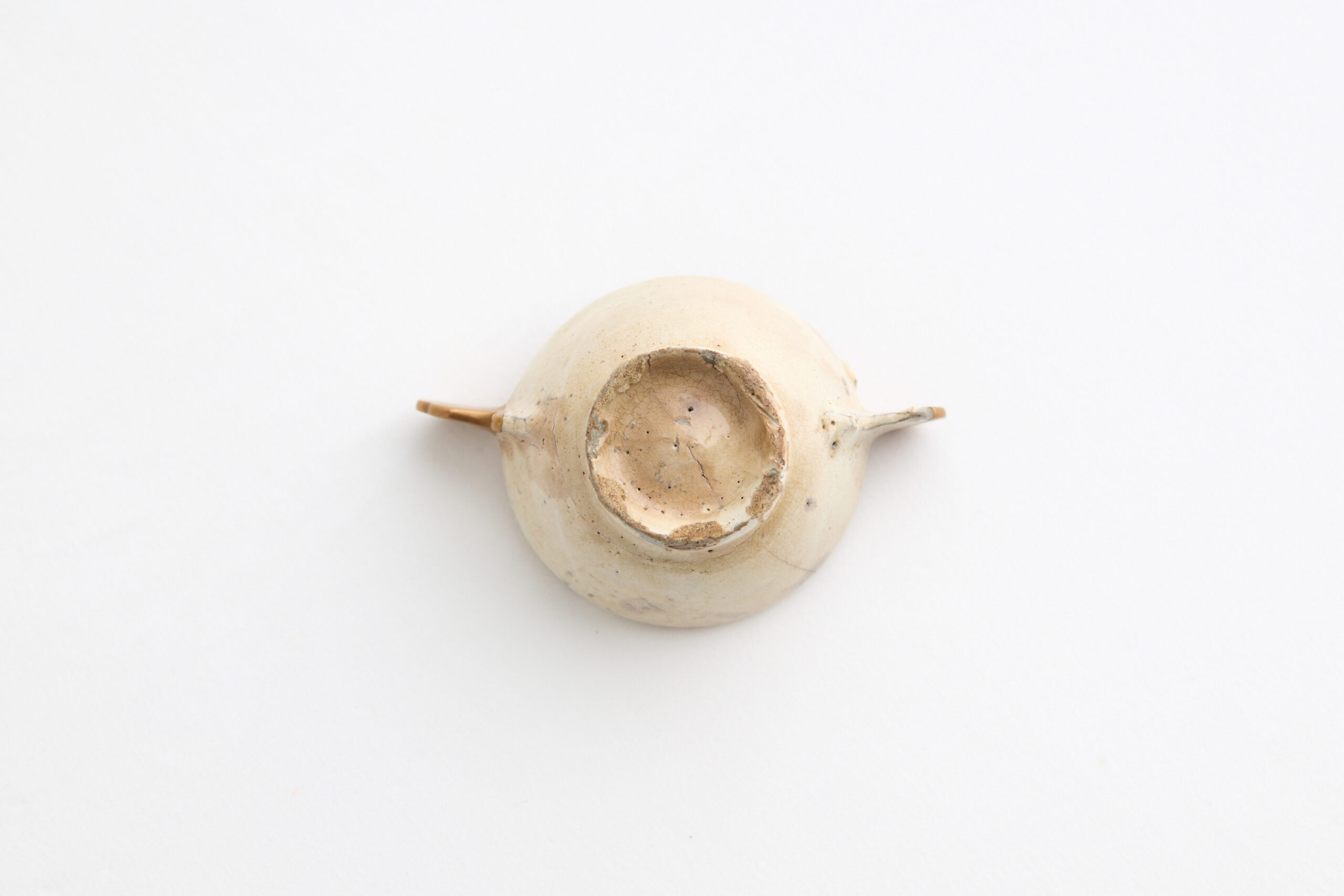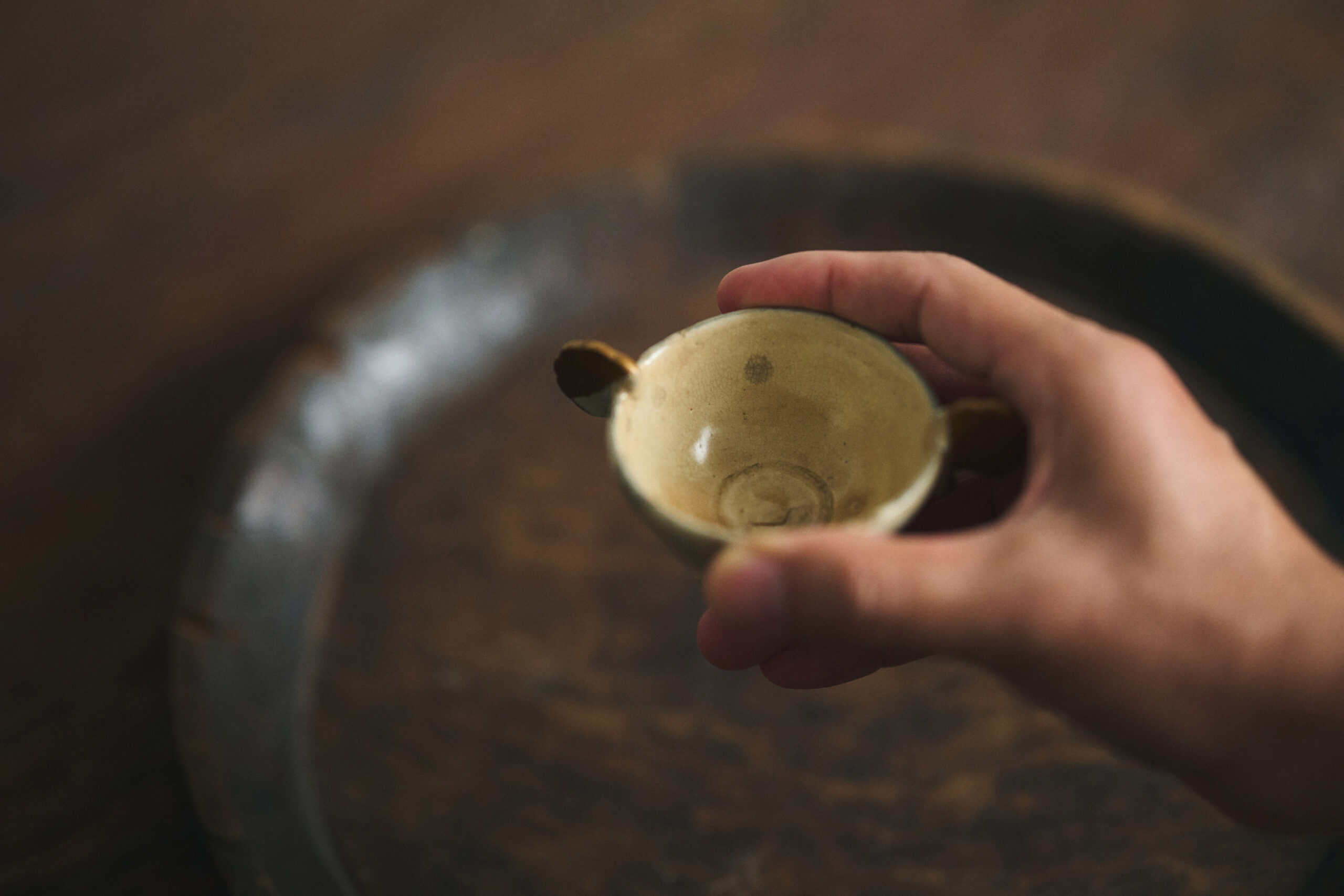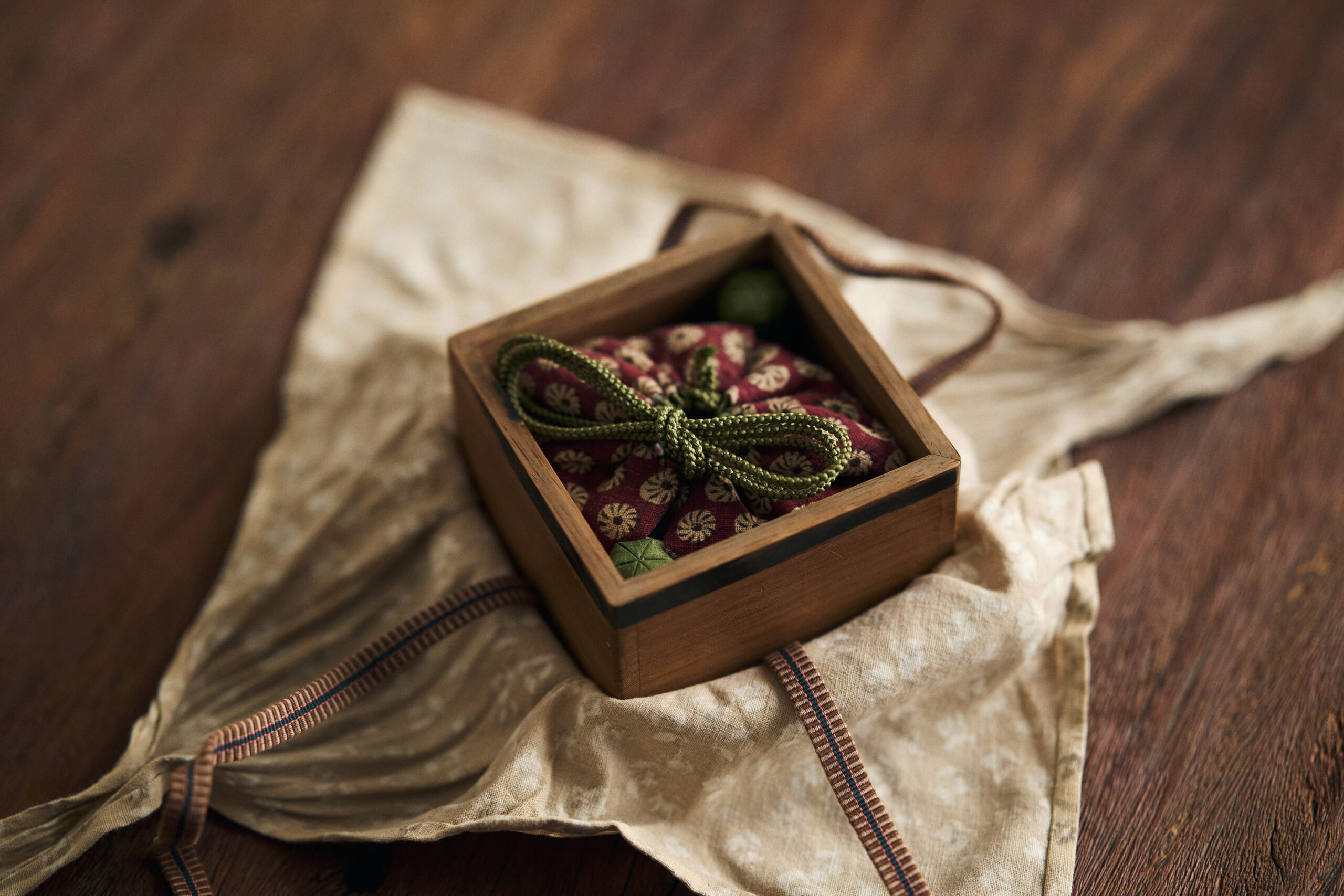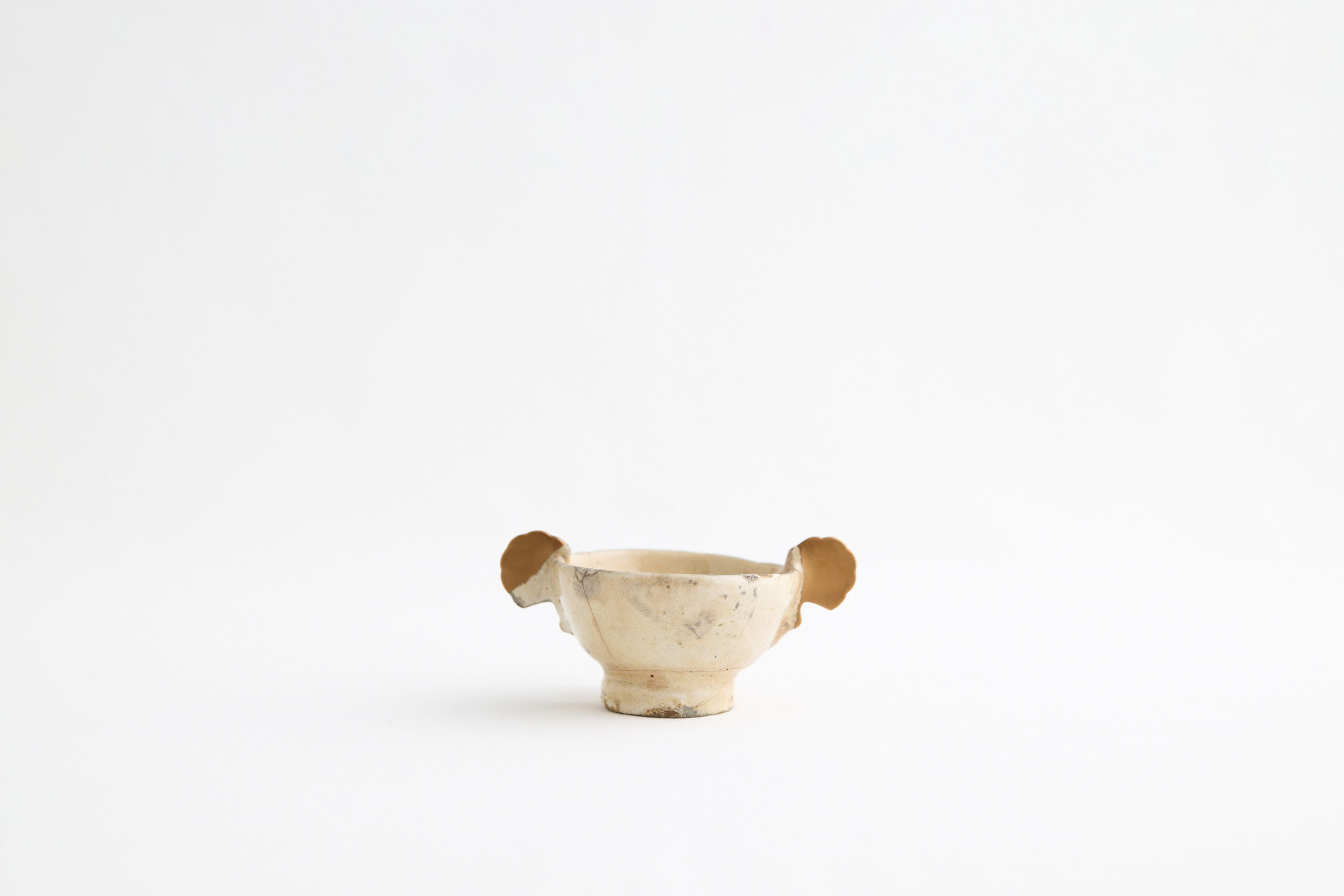
粉引耳盃
Kohiki ear cup
Sold Out
- Period
- Korea, Joseon dynasty (15-16th century)
- Provenance
- Uehara Eizando - Gogatsudo - Private collection
- Sizes
- d. 65mm, w. 102mm, h. 43mm
- Accessories
- Wood box, Shifuku with cushions, Furoshiki
This is a Kohiki (*1) or “ear cup” from Hōjō (currently the Boseong region in Korea). Originally a ritual vessel, both ears are chipped and repaired with gold, but what really catches the eye is its size. While most ear cups normally have a diameter of over 10 cm, this one is just 6.5 cm, making it ideal for a sake cup. Another highlight is the impressive, almost disproportionately large base compared to its size.
The soft white color indicative of Hōjō Kohiki has changed to brown and pink, showing the extent to which it has been cherished and lovingly held in the hands of a connoisseur for many years and has absorbed plenty of sake. Time spent sipping a drink while enjoying the soft, creamy texture of the cup is an incomparable pleasure.
(*1)
The Kohiki technique was perfected through a “yearning for white.” Around the 15th century, commoners were not permitted to use white porcelain, the luxury tableware reserved for imperial dynasties and government officials. Thus, Kohiki was the result of earnest efforts to somehow create white tableware using black clay (the leading theory is that it was inspired by the Cizhou kiln in China).
At the time, high-quality kaolin (pottery stone) was available in the area around Hadong County in the southern part of the Korean Peninsula. Pottery was turned on a wheel, dipped in elutriated kaolin, dried in the sun, and then coated with ash glaze before being fired to create Kohiki pottery.
Kohiki was well received at first, but with each use, moisture and oil permeated and stained it. As such, it was disliked by the people of the Korean Peninsula, who initially appreciated its pure white color, and it ended up being short-lived. However, as we well know, Japanese tea masters found the stains on Kohiki to be representative of “wabi” (a Japanese aesthetic of simplicity) and were pleased with it. The famous tea bowls “Sohaku,” “Miyoshi,” and “Tsuda” are all produced in Hōjō.






